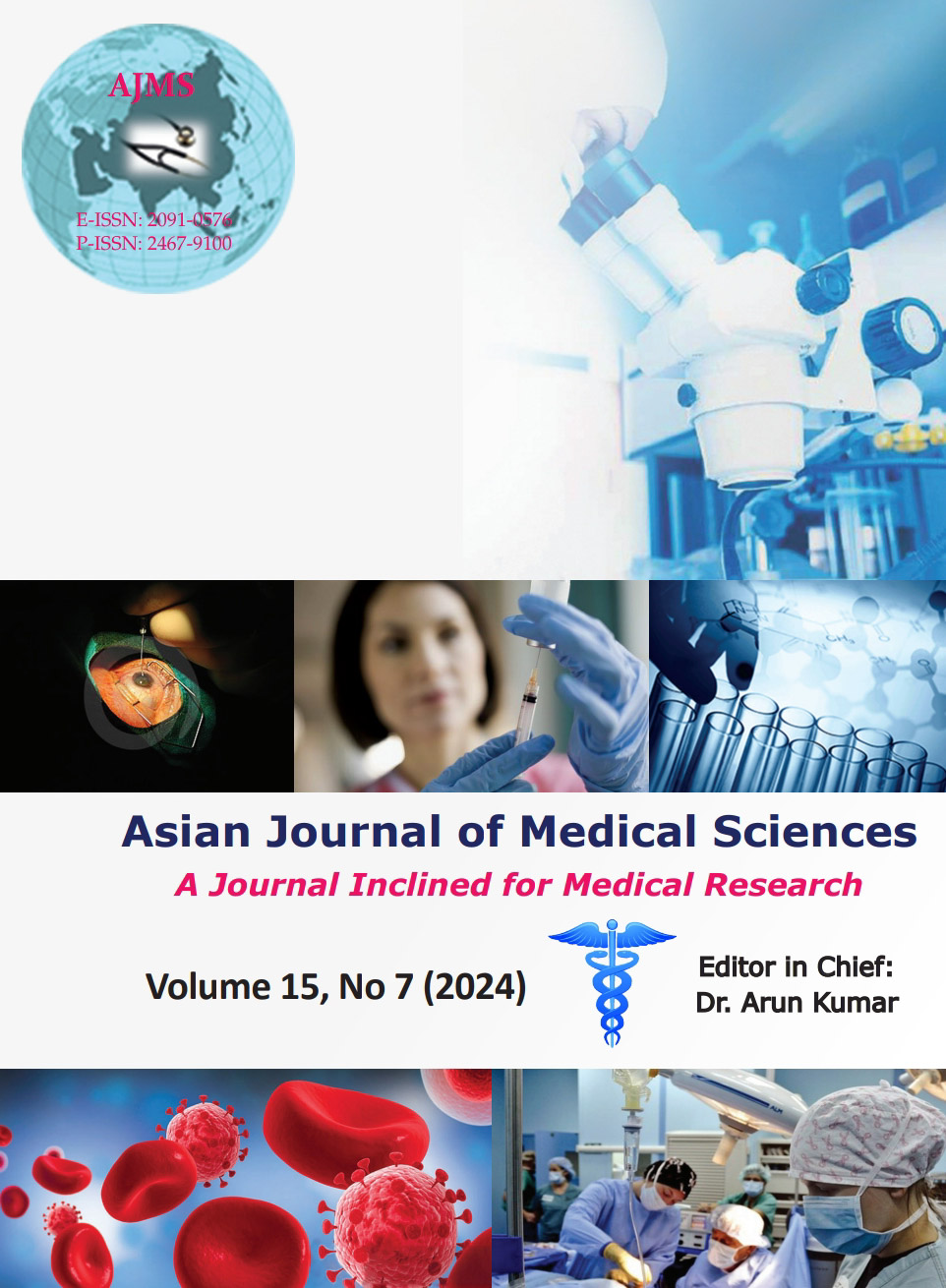Safety and effectiveness of ultrasound-guided single injection of 5% dextrose for median nerve hydrodissection in carpal tunnel syndrome
Keywords:
Hydrodissection; 5% dextrose; Carpal tunnel syndrome; Median nerve neuropathyAbstract
Background: In carpal tunnel syndrome (CTS), conservative management did not show satisfactory results, and some patients required revision surgery due to persistent or recurrent symptoms. Ultrasound (USG)-guided median nerve (MN) hydrodissection with a 5% dextrose injection is an advanced approach for treating symptoms of CTS. We prospectively investigated the patients to demonstrate the safety and effectiveness of this approach.
Aims and Objectives: This study aims to evaluate the effect of USG-guided nerve hydrodissection using single injection of 5% dextrose on pain, MN conduction parameters, and functional status in patients with CTS of mild–to-moderate grade. The study also predicts about the safety of the procedure.
Materials and Methods: A study was performed in the pain clinic of the tertiary care teaching institute of India for one year. The study included 15 patients diagnosed with mild-to-moderate CTS. The diagnosis was done on the basis of history, physical examination, and a nerve conduction velocity (NCV) study. Patients were given analgesics and NSAIDS and enrolled in the procedure. Parameters used for statistical analysis were Visual Analog Scale (VAS) scores, NCV study data (sensory conduction velocity [SNCV] and distal motor latency [DML]), and Boston carpal tunnel questionnaire (BCTQ) scores. Pre-injection parameters were compared with parameters 3 months after the injection to show the usefulness of this procedure.
Results: A statistically significant reduction in VAS score was found in 74% of the cases (P<0.05). The nerve conduction study parameters have shown significantly higher SNCV and lower DML latency in 60% of cases (P=0.001 and P=0.001, respectively). Improved BCTQ scores were found in 80% of cases (for the symptom severity scale, P=0.001 and for the functional status scale, P<0.01). No complications such as allergic reactions, sensory loss, or paresis were recorded post-injection. However, transient injection site pain was present in all patients which did not last for more than 24 h.
Conclusion: MN hydrodissection using a single injection of 5% dextrose under USG is a safe and effective approach offering pain relief, better MN conduction, and improved functional status in patients with CTS of mild-to-moderate grade.
Downloads
Downloads
Published
How to Cite
Issue
Section
License
Copyright (c) 2024 Asian Journal of Medical Sciences

This work is licensed under a Creative Commons Attribution-NonCommercial 4.0 International License.
Authors who publish with this journal agree to the following terms:
- The journal holds copyright and publishes the work under a Creative Commons CC-BY-NC license that permits use, distribution and reprduction in any medium, provided the original work is properly cited and is not used for commercial purposes. The journal should be recognised as the original publisher of this work.
- Authors are able to enter into separate, additional contractual arrangements for the non-exclusive distribution of the journal's published version of the work (e.g., post it to an institutional repository or publish it in a book), with an acknowledgement of its initial publication in this journal.
- Authors are permitted and encouraged to post their work online (e.g., in institutional repositories or on their website) prior to and during the submission process, as it can lead to productive exchanges, as well as earlier and greater citation of published work (See The Effect of Open Access).




